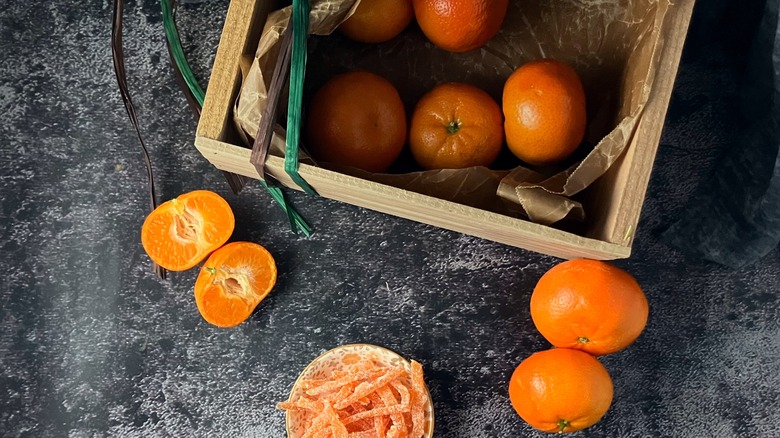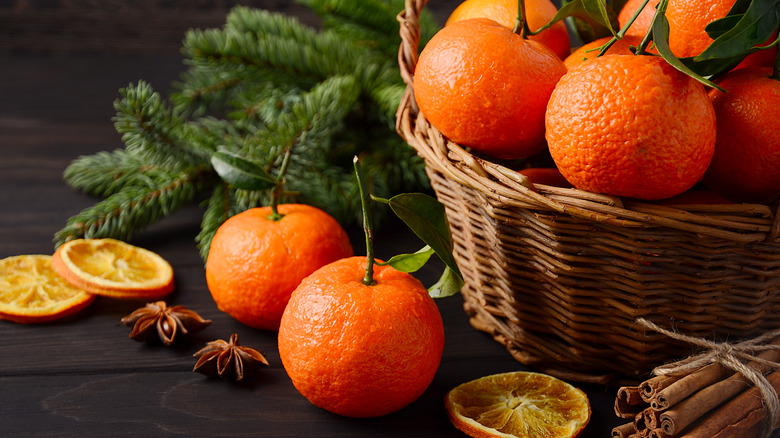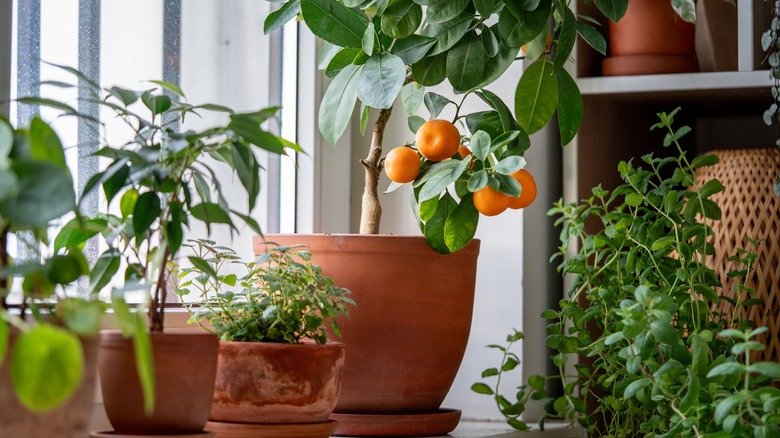This Is When Clementines Are Perfectly In Season
When it comes to fruit, clementines are pretty amazing. They're not only widely available during a season that lasts for months, but they're super sweet and easy to eat. Peeling clementines is easy — no simple orange peeling hacks necessary — and there aren't any seeds to worry about either. When they hit the produce section of your favorite grocery store, they might be described as Sweeties, Cuties, or Halos, and these adorable little fruits definitely pack a sweet punch.
Another great thing about clementines is that they're in season throughout the winter months. They generally start appearing in October and have a long season that runs through early to mid-winter, typically through January or February. And that's another thing to love about them: They're exactly what you need when you find yourself facing long winter nights and craving a bit of summertime flavor.
Even though clementines are available all winter long, they're not going to taste the same in October as they do in January. Early clementines tend toward the more sour side, and when the season reaches the peak — which happens around the winter solstice when the nights are the longest — they're at their sweetest. That's when you can get the very best clementines, so it makes sense that they've been a holiday tradition for a long time.
The cold-hardy nature of the clementine makes them perfect for winter gift giving
Clementines are actually a fairly recent addition to the citrus family, and they're considered to be the descendants of the mandarin orange. Mandarins developed over a million years ago, which makes the clementine a relative newborn. The smaller, sweeter offshoot was first identified as a separate variety around 1902, and by 1914, they had made their way from obscurity overseas to a major commercial crop in California. And it makes sense that they were such a hit: As the weather gets colder, clementines get sweeter.
We might not usually think of fresh fruits and vegetables hitting their peak season in the middle of winter, and the cold weather hardiness of clementines, and other types of oranges, has given them a unique place among wintertime traditions. For generations, eager celebrants of all ages have woken up on a Christmas morning to find a clementine (or orange) in their Christmas stocking, and there's a fascinating bit of lore behind that.
Our modern Santa Claus traces its roots back to the 4th century Saint Nicholas. According to the story, Nicholas was known for his charity and generosity, once giving three girls three sacks of gold for their dowries. It's believed that the brightly colored oranges were given as gifts that symbolized that same spirit of generosity, and served as a reminder that even in the longest, darkest days of the year, there was sweetness, kindness, and brighter times ahead.
Here's how to pick the best clementines
Choosing the best and sweetest clementines isn't as easy as just picking the best-looking pieces of fruit, and there are some things to keep in mind when selecting yours. Clementines should be small — if you see a collection of large clementines, there's a good chance they were picked past their prime, and they're going to be less sweet. You should also take into consideration the weight of the fruit: The heavier they are, the juicier they will be. The skin should be evenly colored, have no green tint or discolorations, and they should feel firm, not soft.
Do you really love clementines and look forward to seeing them show up in stores? Here's a fun fact: With a little work, you can actually grow the trees as houseplants or — depending on your climate — on patios or in gardens. Clementine trees are relatively small, and when they're grown in containers, they can be pruned to around 6 feet tall. They'll bloom in the spring, and bear fruit during the same late fall and winter season as their commercially-grown counterparts.
Once you've picked your perfect clementines, just keep them in the fridge until you're ready to eat them. They'll stay fresh for up to three weeks there, so when you see them at their peak, you should definitely stock up. They won't go to waste, especially if you get creative and use them in dishes like a clementine and fennel salad, or a cranberry and clementine chutney.


